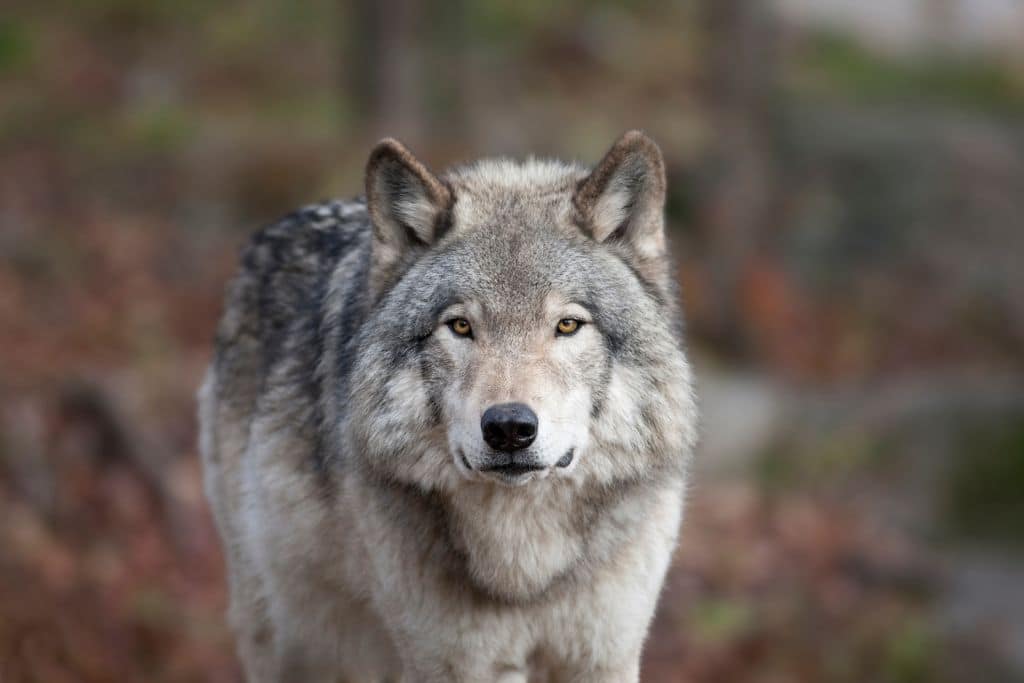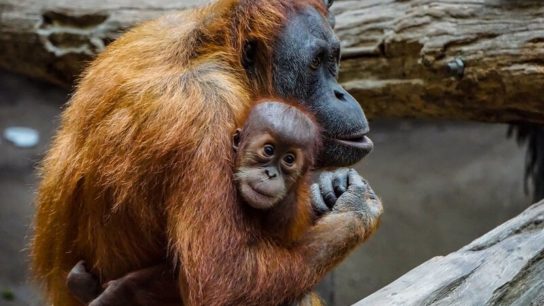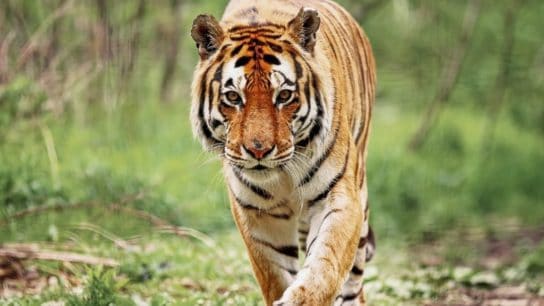Wolves play an extraordinarily vital role in the natural world. These apex predators maintain balance in ecosystems by controlling prey populations, supporting biodiversity, and shaping landscapes. Due to habitat loss, human conflict, and widespread hunting, wolf populations have decreased in many parts of the world – with widespread repercussions on ecosystems. Understanding the crucial role that wolves play is essential in working towards protecting this species and the ecosystems that depend on it.
—
Wolves are more than just predators. They are a vital species whose presence or absence profoundly impacts the health and structure of their ecosystems.
Their predatory behaviors initiate several ecological effects, also known as trophic cascades, which maintain the balance and biodiversity of the surrounding habitats. By preying on large herbivores such as elk and deer, they help regulate the populations, which prevents overgrazing and in turn allows plant communities to thrive.
Preying on these herbivores not only controls the herbivore populations but it also leads to a more balanced and dynamic ecosystem. For instance, one study shows that the presence of wolves can lead to increased growth of aspen, willow, and cottonwood trees due to reduced browsing pressure from herbivores. Wolves also impact vegetation patterns and landscape features. In areas where wolves have been reintroduced, such as Yellowstone National Park, there has been a recovery of riparian vegetation. This resurgence supports a variety of species and contributes to overall habitat diversity. The reduction in overbrowsing also allows for young trees and shrubs to regenerate, which reduces erosion and stabilizes soil, promoting ecosystem health. Predation by wolves creates a more balanced food web, which supports various species.
What’s more, wolves indirectly boost the numbers of smaller mammals and ground-nesting birds by controlling mesopredator populations such as coyotes. Wolf predation also provides carrion that benefits scavengers such as ravens, eagles, and bears, which enriches the nutrient cycle and supports a more diverse community of organisms throughout the ecosystem.
Consequences of Wolf Extirpation
Removing wolves from ecosystems has severe consequences. Without apex predators to regulate prey populations, herbivores such as deer and elk become overpopulated. This leads to overgrazing, where vegetation is consumed faster than it can regenerate. Over time, this causes a loss of plant diversity and increases soil erosion. This type of habitat degradation further disrupts the entire ecosystem, threatening the species that depend on these plants for food and shelter.
The absence of apex predators such as wolves also allows mesopredator populations, such as coyotes, to expand. These predators can overhunt smaller mammals and ground-nesting birds, leading to ecosystem imbalances. Wolf extirpation also impacts scavenger populations. Wolves play a crucial role in the ecosystem by providing carrion for scavengers like eagles, ravens, and bears. Without wolves, these scavengers lose a vital food source, potentially leading to a decline in their populations. This can cause a disruption in ecological processes such as nutrient recycling. The reduction in wolf populations has shown to decrease food availability for scavengers, showcasing the connection between organisms within an ecosystem.
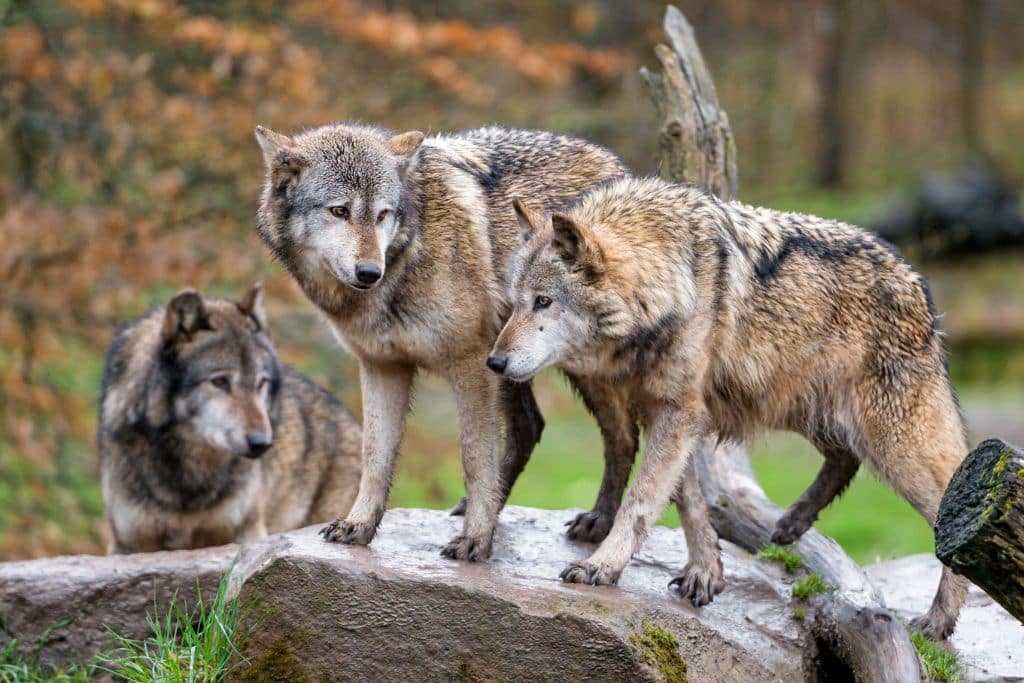
Additionally, when wolves are removed from an ecosystem, human-wildlife conflict can increase. Without enough natural predators, herbivores like deer and elk will typically move closer to agricultural areas to search for food sources, damaging crops and creating economic burdens for farmers. This can lead to increased culling of herbivores by humans, which further disrupts ecosystems. An absence of wolves is associated with higher incidences of deer encroaching on human habitats, leading to increased deer-vehicle collisions and agricultural damage.
Recognizing these consequences highlights the need for wolf conservation and reintroduction efforts in ecosystems that have suffered dwindling wolf populations.
You might also like: The Fall and Rise of the American Grey Wolf
Wolf Reintroduction Efforts
Wolf reintroduction involves restoring wolves to areas where they have been extirpated, with the goal of reestablishing their ecological roles to help promote biodiversity and maintain balance.
Despite ecological benefits, wolf reintroduction has faced public resistance, particularly from rural communities and ranchers that are concerned about livestock predation and economic loss. In the United States, states like Wyoming have implemented policies to manage wolf populations due to concerns of livestock safety. Similarly in Europe, growing wolf populations have led to conflicts with farmers, prompting discussions about adjusting protection measures to balance conservation efforts with agricultural interests.
Globally, there have been several reintroduction programs that have had mixed results. Countries like Scotland have been identified as suitable for rewilding projects, including potential wolf reintroduction due to their expansive natural habitats. In the US, Colorado voters approved a ballot measure in 2020 directing state agencies to develop plans to reintroduce gray wolves to western Colorado by the end of 2023. This initiative aims to restore ecological balance, though there have been some discussions among stakeholders regarding the potential impacts on local communities and wildlife.
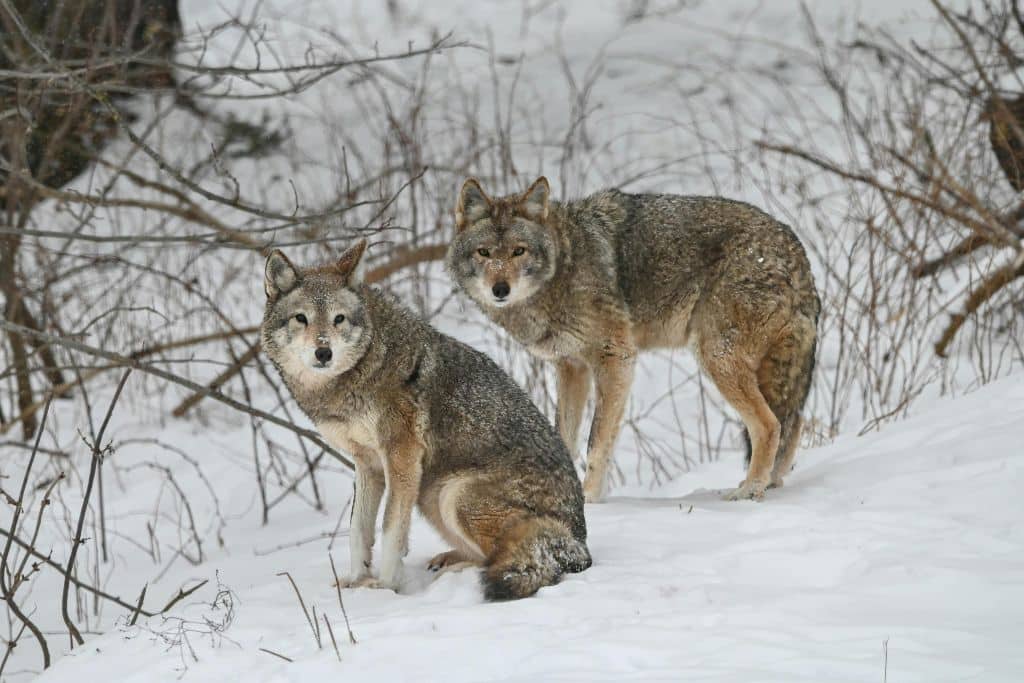
Overcoming challenges associated with wolf reintroduction requires collaboration between conservationists, communities, and policymakers. Addressing concerns through management strategies, such as implementing non-lethal deterrents for ranchers’ livestock, can help in mitigating conflict. Compromise and engagement in the process can foster understanding and support for reintroduction initiatives, which will ultimately contribute to the restoration of ecosystems and the preservation of biodiversity.
Case Studies
The eradication of wolves in Yellowstone National Park in the US in the early 20th century caused a striking increase in elk populations. Their incessant overgrazing resulted in the decline of aspen and willow trees, which in turn affected species that were reliant on these plants, such as beavers and songbirds.
On Isle Royale in Michigan, the absence of a sufficient wolf population led to a bigger moose population. This caused a significant reduction in vegetation due to their overbrowsing, which impacted the entire island’s ecosystem.
The disruptions within ecosystems that have followed the removal of wolves have prompted conservation efforts and wolf reintroduction programs in hopes to restore balance and biodiversity. The reintroduction of wolves to Yellowstone National Park in 1995 marked a turning point in restoring ecological balance. As the wolf population began to gradually increase, scientists noted changes in the ecosystem.
Wolves preyed on elk, and the elk population decreased, which altered its grazing behavior. With the elk population decreasing and grazing less, willow and aspen trees were able to regenerate after years of decline. The resurgence of these plants provided essential resources for species like beavers, which played a vital role in shaping the ecosystem. Beavers began building dams, helping to create wetlands that offer habitats for fish, amphibians, and birds while simultaneously stabilizing riverbanks and reducing erosion. The presence of wolves also indirectly benefited smaller predators and scavengers. The coyote population had increased in the absence of wolves but when wolves were reintroduced, the species’ balance was restored, allowing smaller mammals and ground-nesting birds to thrive again. Wolf predation also supplied carrion for scavengers, like ravens, eagles, and bears, which enriched the food web and supported biodiversity.
Yellowstone’s success has inspired many conservation programs around the world. This case study shows that apex predators can influence entire ecosystems through trophic cascades, promoting biodiversity and resilience.
More on the topic: Species Reintroduction: How Wolves Saved Beavers in Yellowstone
Threats Wolves Continue to Face
Despite successful reintroduction efforts in regions like Yellowstone National Park, wolves continue to face threats due to human activities and environmental changes. Conservationists continue to struggle with finding solutions to challenges such as habitat loss, hunting, conflicts with livestock farmers, and climate change, which threatens the survival of wolf populations.
As human populations continue to expand, infrastructure development, deforestation, and urbanization have all led to habitat loss for wolves. Roads, settlements, and agricultural expansion disrupt the natural ecosystems, which reduces the availability of hunting grounds and forces wolves into smaller and more isolated territories. This disruption also increases the risk of inbreeding, conflicts with humans, and vehicle related wolf fatalities.
Despite the fact that wolves are legally protected in some regions, hunting and poaching is still a threat to wolves. In parts of Europe, Canada, and the US, government policies allow for regulated wolf hunting due to concerns about livestock predation and declining prey populations. Illegal poaching also plays a major role in the reduction of wolf populations, specifically in areas where wolves are seen as a nuisance and a threat to livelihoods.
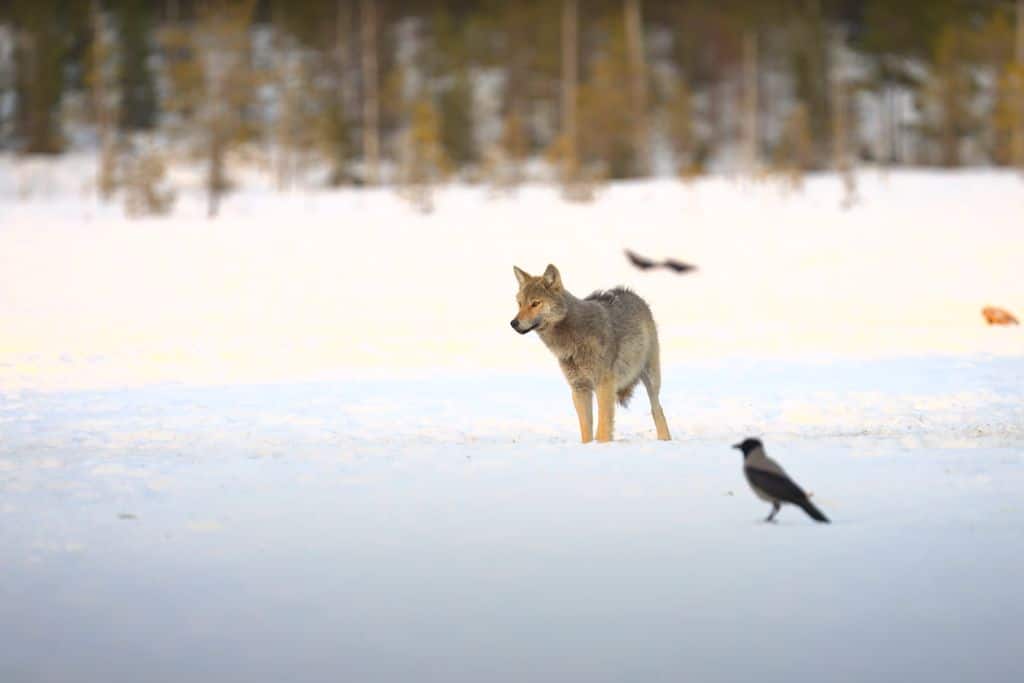
In regions where wolves are legally protected, policy loopholes, mismanagement, and weak enforcement also lead to vulnerability in wolf populations. Because wolves are opportunistic predators, they will hunt anything that is available to them. This means that when natural prey populations decline or when wolf habitats overlap with farmland, they can and will prey on livestock. Because of this, there can sometimes be tension between ranchers and conservationists, since some farmers will kill wolves to protect their livestock. Non-lethal deterrents such as guard dogs, fladry fencing, and compensation programs for lost livestock have been introduced in some areas to mitigate conflict and compromise, but there is still resistance.
Wolves and Climate Change
Climate change indirectly affects wolves by altering ecosystems and disrupting prey dynamics. Rising temperatures, changing precipitation patterns, and increased wildfires can contribute to a reduction in prey availability, which forces wolves to compete for food or expand their hunting ranges. In the Arctic and northern boreal forests, wolves rely on caribou and other cold-adapted prey. However, climate change here has shifted migration patterns, making it harder for wolves to successfully hunt.
Conservation Efforts and Future Outlook
Conservation efforts can help address these challenges by advocating for stronger legal protections, habitat restoration, sustainable livestock management practices, and climate action. Public education is also crucial when it comes to reducing misconceptions about wolves. Without continued advocacy, these threats could reverse conservation efforts and push wolves back towards the verge of endangerment.
Over the past several decades, efforts to protect and conserve wolves have grown. Wolves are legally protected under national and international conservation frameworks in many regions, such as the US Endangered Species Act and the European Habitats Directive, both of which have contributed to wolf population recovery in certain areas. Unfortunately, in some regions, wolf populations continue to face culling programs and legal hunting quotas due to different jurisdictions and a lack of legal protections.
One of the most successful conservation efforts is establishing protected areas that allow wolves to thrive with minimal human interference. National parks, wildlife refuges, and rewilding projects have allowed wolves to reclaim portions of their historical range. This is seen in Yellowstone National Park’s wolf reintroduction program, which led to widespread ecological benefits, such as improved vegetation growth and healthier prey populations, while also restoring wolf populations.
When it comes to ensuring long-term wolf conservation, there must be collaborative efforts between communities and conservationists. Many conservation groups collaborate with ranchers and farmers to implement non-lethal predator deterrents, such as livestock guardian dogs, electric fencing, and range riders. These efforts can reduce human-wolf conflicts, which fosters a sustainable approach rather than lethal control methods. Many programs, such as the Wood River Wolf Project in Idaho, US, have shown that non-lethal management is successful at reducing livestock losses while maintaining wolf populations. When working towards balancing wolf conservation and the needs of the community, it is essential to work towards implementing policies and strategies that focus on compromise and coexistence.
Financial compensation programs for ranchers who lose livestock to wolf predation can also help mitigate economic losses and foster a greater acceptance of wolf presence in shared landscapes.
You might also like: Coexistence and Conflict with North America’s Grey Wolf
This story is funded by readers like you
Our non-profit newsroom provides climate coverage free of charge and advertising. Your one-off or monthly donations play a crucial role in supporting our operations, expanding our reach, and maintaining our editorial independence.
About EO | Mission Statement | Impact & Reach | Write for us
